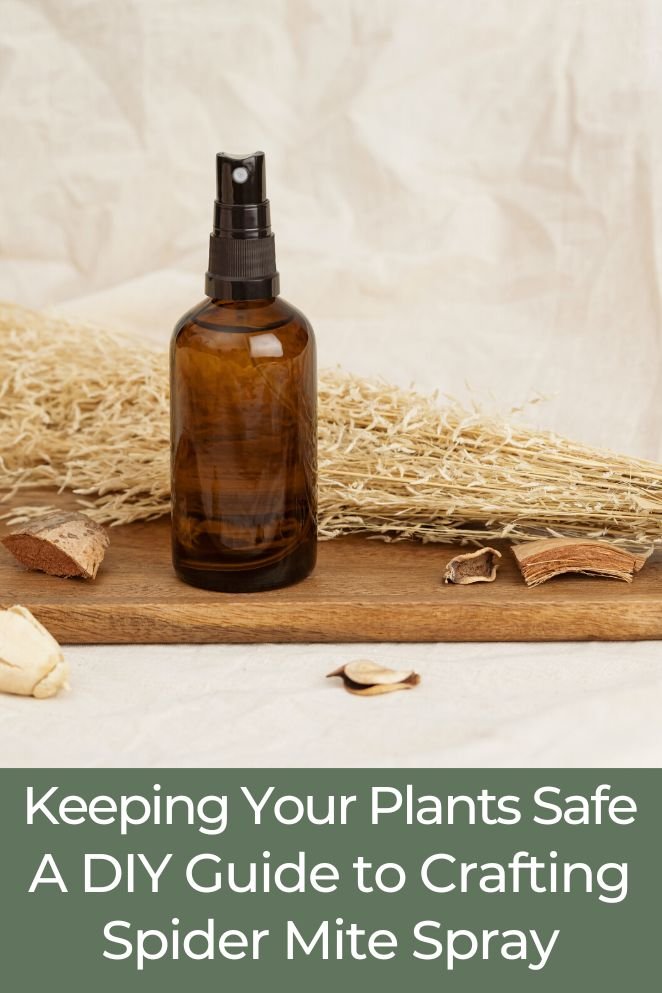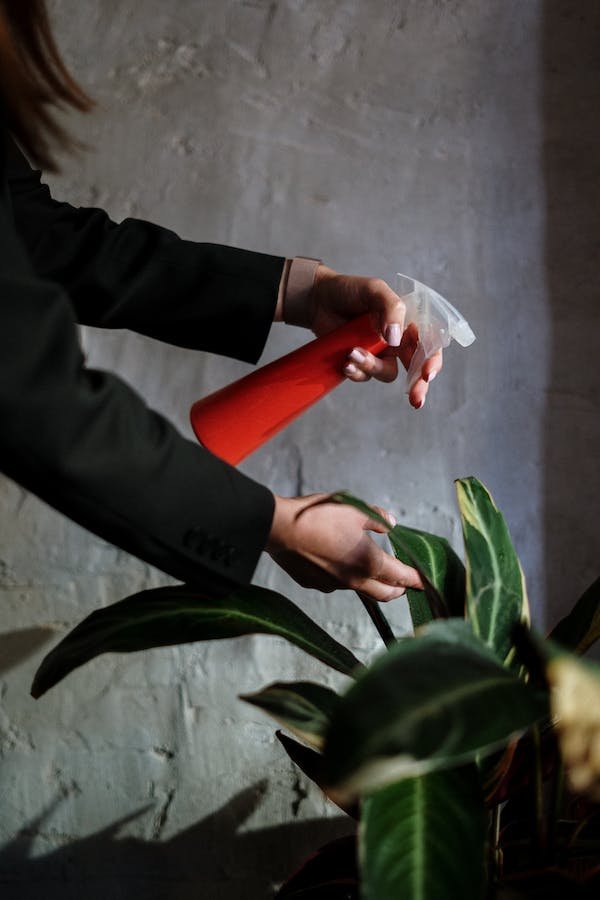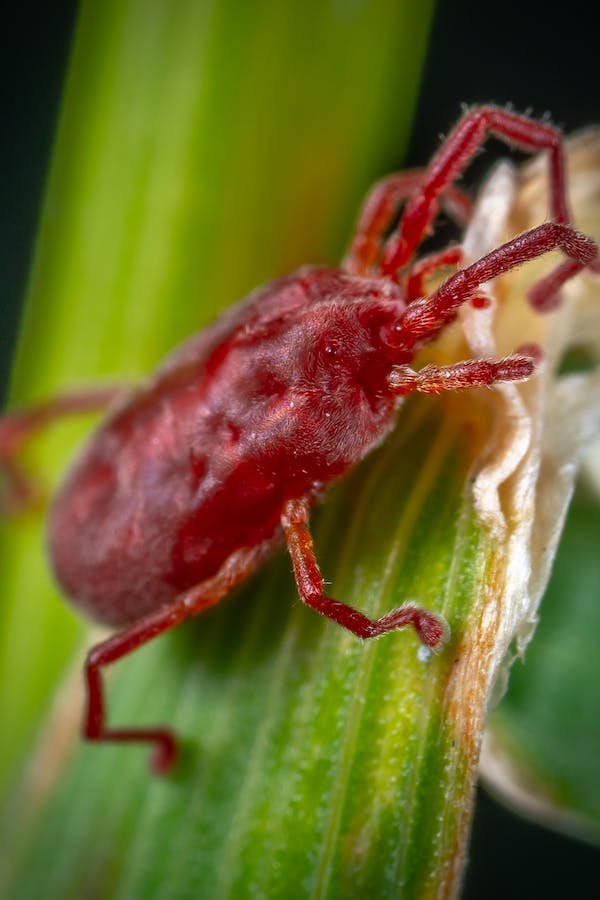
Spider mites are a common problem for plant lovers, especially those who grow plants indoors.
These tiny pests can quickly infest your plants, causing damage and even death if left untreated.
While there are many commercial insecticides available, they often contain harmful chemicals that can harm both your plants and the environment.
That’s why it’s important to use natural and effective methods to control spider mites.
In this article, we’ll explore some of the most popular and effective DIY spider mite sprays that you can make at home.
Homemade Spider Mite Sprays
Milk and flour spray

Creating a DIY spider mite spray using milk and flour is a popular and accessible method for controlling these tiny pests.
This concoction is not only easy to make but has proven effectiveness in managing spider mite infestations.
Here’s a detailed guide on preparing and utilizing this homemade spray:
- Read also: How To Make a Natural Pesticide
- Read also: DIY Plant Watering Bottle Ideas
Ingredients
- Equal parts water
- Milk
- And flour
Instructions
Mixing the spray
Combine equal parts water, milk, and flour in a spray bottle.
This straightforward mixture serves as the base for your spider mite control solution.
Shaking well
Ensure the ingredients are thoroughly mixed by shaking the spray bottle well before each use.
This guarantees a homogeneous solution, maximizing its effectiveness.
Application
When ready to use, spray the mixture generously on the affected plants. Aim to cover both the upper and lower surfaces of the leaves, where spider mites commonly reside.
Mechanism of action
The milk and flour blend creates a sticky paste when applied to the plants. This sticky consistency serves a dual purpose:
- Trapping: The stickiness ensnares spider mites, preventing them from moving freely on the plant.
- Suffocating: The paste obstructs the mites’ breathing apparatus, leading to their suffocation.
Frequency of application
To ensure the continued effectiveness of the spray, repeat the application every few days until the spider mite population diminishes.
Consistency is key in breaking the life cycle of these pests.
Rubbing alcohol spray

Using rubbing alcohol as a natural remedy is an effective solution for tackling spider mite infestations on your plants. This method is not only efficient but also easy to implement.
Here’s a comprehensive guide on creating and applying a rubbing alcohol spray to control spider mites:
Ingredients
- 1 part rubbing alcohol
- 3 parts water
Instructions
Mixing the spray
In a spray bottle, combine one part rubbing alcohol with three parts water.
This formulation strikes a balance, leveraging the alcohol’s potent properties while ensuring it’s adequately diluted to prevent harm to your plants.
Shaking well
Before each application, shake the spray bottle thoroughly.
This step guarantees a uniform mixture, optimizing the spray’s efficacy when combating spider mites.
Application technique
When applying the rubbing alcohol spray, be meticulous in covering both the upper and lower surfaces of the leaves.
Spider mites tend to congregate on these surfaces, and comprehensive coverage ensures effective contact.
Fine atomizer spray

Utilizing a fine atomizer spray bottle can be a highly effective strategy in your battle against spider mites.
This method employs a mist that envelops the affected plants, providing an efficient means to suffocate and control the pesky mites.
Here’s an in-depth guide on employing a fine atomizer spray for spider mite management:
Equipment needed
Fine atomizer spray bottle
Procedure
Selection of atomizer
Choose a fine atomizer spray bottle for optimal results.
The fine mist it produces ensures thorough coverage, reaching all parts of the plant, including the undersides of leaves where spider mites often dwell.
Water filling
Fill the fine atomizer spray bottle with water.
The use of water alone in this method is intentional, providing a non-toxic and environmentally friendly approach to spider mite control.
Spraying technique
When applying the mist, ensure even and thorough coverage of the affected plants.
The fine droplets produced by the atomizer allow for a comprehensive reach, increasing the chances of suffocating the spider mites.
Misting frequency
To disrupt the spider mite life cycle and achieve sustained control, repeat the misting process every few days.
Regular applications are crucial in preventing the resurgence of the pest population.
Water and washing-up liquid

A time-tested and traditional approach to combatting spider mites involves a simple yet effective solution of water and washing-up liquid.
This method, employing common household items, provides an accessible and environmentally friendly means of controlling these pests.
Here’s an in-depth guide on creating and applying water and washing-up liquid spray for spider mite management:
Ingredients
- 1 tablespoon washing-up liquid
- 1 liter of water
Instructions
Selecting the spray bottle
Choose a spray bottle suitable for this application.
Ensure it is clean and free from any residues of previous substances.
Mixing the solution
In the spray bottle, combine one tablespoon of washing-up liquid with one liter of water.
The use of a gentle, biodegradable washing-up liquid is recommended to minimize any potential harm to your plants.
Thorough mixing
Shake the spray bottle well to ensure the washing-up liquid is evenly dispersed in the water.
This step is essential for achieving a well-blended solution that maximizes effectiveness.
Spraying technique
When applying the solution, spray the affected plants thoroughly.
Be meticulous in covering both the upper and lower surfaces of the leaves, as spider mites tend to inhabit these areas.
Natural commercial products
Exploring natural commercial products for spider mite control opens up a range of convenient and eco-friendly options.
Two widely used choices in this category are Captain Jack’s Dead Bug Brew and insecticidal soap.
These products are crafted from natural ingredients, ensuring a safe and effective approach to managing spider mite infestations.
Here’s a detailed exploration of these natural solutions:
Application
Follow the instructions provided on the product label for the correct dilution ratio.
Typically, it involves mixing a specified amount of the product with water.
Spraying technique
Use a spray bottle or garden sprayer to apply the solution to the affected plants.
Ensure thorough coverage, reaching both the upper and lower leaf surfaces.
Mechanism of action
Spinosad, the active ingredient, disrupts the nervous system of spider mites upon contact.
It is effective against a variety of pests while being less harmful to beneficial insects.
Frequency of application
Adhere to the recommended application frequency mentioned on the label.
Regular treatments are often necessary to address the various stages of the spider mite life cycle.
Additional Tips for Spider Mite Control
Enhance your spider mite control efforts with these additional tips tailored for natural management:
Physical removal
Employ a gentle approach by using a small brush or microfiber cloth to physically remove spider mites from plant leaves and stems.
This proactive step reduces the mite population and curtails their spread to neighboring plants.
Consistent application
Maintain consistency and thoroughness in your chosen control method.
Given the rapid reproduction rate of spider mites, regular treatment is paramount.
By staying vigilant and treating plants on a routine basis, you prevent mite resurgence and ensure effective control.
Patience and persistence
Exercise patience and persistence in your spider mite control endeavors.
Natural methods may take time to yield visible results, but steadfastness pays off.
With a determined approach, you’ll gradually gain the upper hand in managing spider mite infestations naturally and effectively.

Common Mistakes To Avoid When Using a DIY Spider Mite Spray
While DIY spider mite sprays can be effective, there are common mistakes to avoid to ensure the best results.
Let’s explore some of these mistakes and how to steer clear of them.
Relying solely on sprays
While DIY sprays are a valuable tool in combating spider mites, it’s important to remember that a comprehensive approach is often necessary.
Simply spraying the affected plants may not be sufficient to fully eradicate the infestation.
Physical removal of spider mites using a small brush or microfiber cloth is a crucial step that should not be overlooked.
This method helps to directly reduce the population of spider mites on the plants, complementing the effects of the spray.
Inadequate application
When using DIY sprays, thorough and consistent application is key.
Spider mites often reside on the undersides of leaves and other hidden areas, so it’s essential to ensure that the spray reaches these spots.
Failing to cover all affected areas can lead to re-infestation and hinder the effectiveness of the treatment.
Neglecting follow-up treatments
Spider mite infestations can be persistent, and a one-time treatment may not be adequate to fully address the issue.
It’s important to reassess the situation and reapply the spray as needed, typically once every few days.
Consistent follow-up treatments are essential to disrupt the life cycle of the spider mites and prevent their resurgence.
Using ineffective ingredients
Not all DIY spider mite spray recipes are equally effective.
It’s crucial to use ingredients that have been proven to work against spider mites.
For instance, horticultural oils and insecticidal soaps are known to be effective against these pests.
Ensuring that the spray contains the right ingredients in the correct proportions is vital for achieving the desired results.
Failing to address the root cause
Successfully combating spider mites also involves addressing the environmental factors that contribute to their proliferation.
For instance, spider mites thrive in dry conditions, so it’s important to maintain adequate humidity levels for the affected plants.
Additionally, over-fertilization with nitrogen can create an environment that is more favorable to spider mites, so it’s important to be mindful of the plant’s nutritional needs.
How Often Should You Use a DIY Spider Mite Spray?
The frequency of applying a DIY spider mite spray can vary based on the specific method used and the severity of the infestation.
Here are some insights from various sources:
Residual effectiveness
Some DIY sprays, such as those containing neem oil, can remain effective for 21-28 days without the need for reapplication, making them suitable for mild infestations.
The life cycle of spider mites
The frequency of application can also be influenced by the life cycle of spider mites.
Since most chemicals don’t kill spider mite eggs, it’s often necessary to repeat the application every 3 days as new nymphs hatch.
Thorough and consistent application
Regardless of the specific timeline, it’s important to apply the spray consistently and thoroughly to ensure that all affected areas are covered.
This can help disrupt the life cycle of the spider mites and prevent re-infestation.
Environmental factors
The frequency of application can also be influenced by environmental factors such as temperature and humidity.
Spider mites multiply quickly in hot weather, so applications may be best at the first sign of infestation and prior to warmer weather.
Physical removal
In addition to spraying, it’s important to physically remove spider mites using a small brush or microfiber cloth.
This step should be integrated into the overall approach to controlling spider mites.
- Read also: DIY Plant Food Recipes for Indoor Plants
- Read also: DIY Plant Food Recipes to Prolong the Beauty of Your Cut Flowers
Conclusion
Spider mites can be a frustrating problem for plant lovers, but there are many natural and effective DIY spider mite sprays that you can make at home.
Whether you choose to use milk and flour, rubbing alcohol, a fine atomizer spray, water, and washing-up liquid, or a natural commercial product, there are many options available for controlling spider mites naturally.
By following the tips and methods outlined in this article, you’ll be able to keep your plants healthy and spider mite-free.



